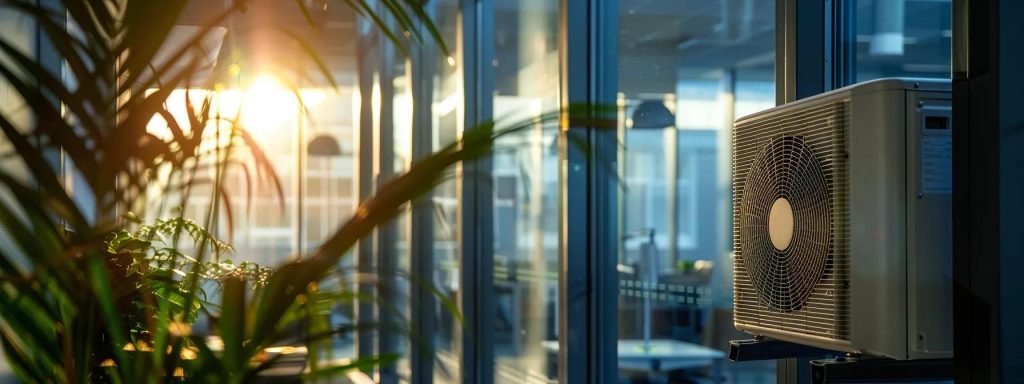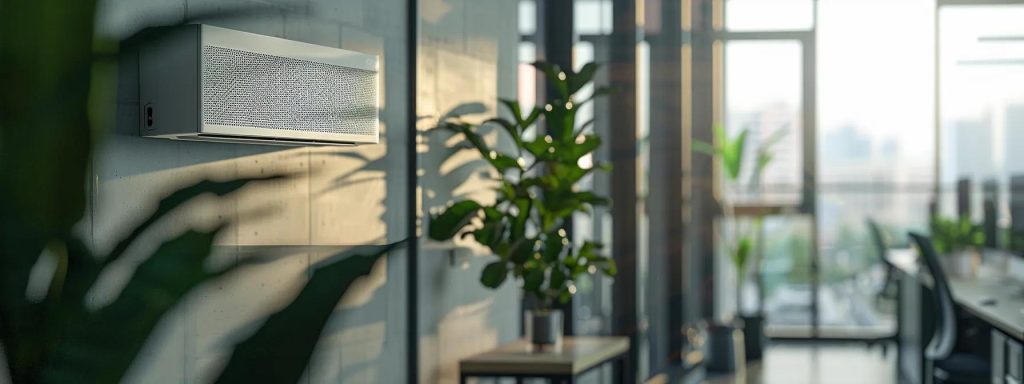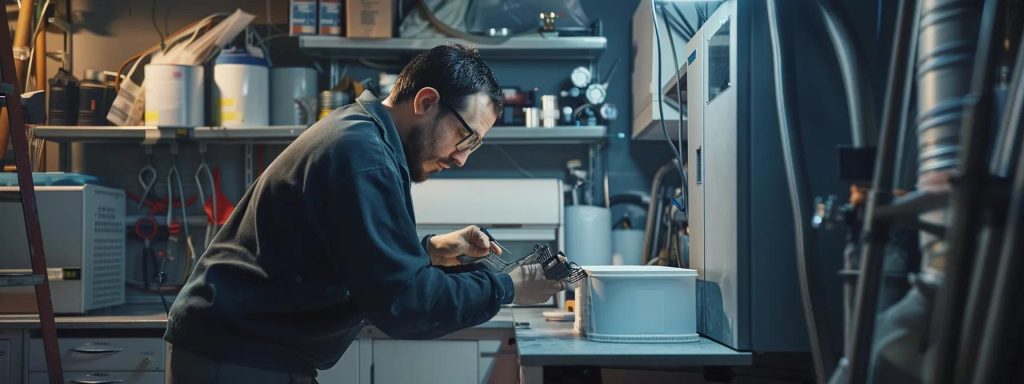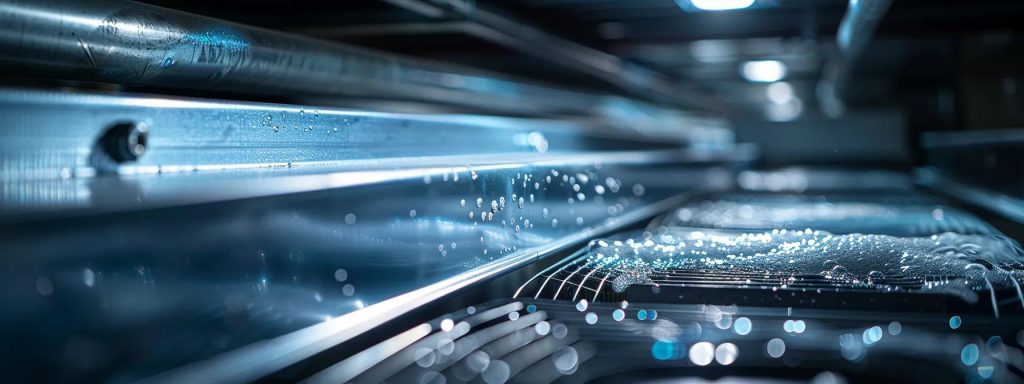
Improve Efficiency With Summer Heat Air Conditioner Maintenance
Summer can be harsh on air conditioners when temperatures soar, especially in homes with metal roofing. Homeowners face rising energy bills and reduced comfort when their central air conditioning systems underperform. This article explains how systematic summer maintenance—such as regular checks on your metal roofing—can improve cooling effectiveness, prevent unexpected breakdowns, and extend your unit’s lifespan. By understanding the importance of regular upkeep and following clear guidelines, you can enhance your HVAC’s
even during the hottest months.
Key Takeaways
- Regular maintenance improves cooling effectiveness and energy efficiency.
- Scheduled check-ups and prompt repairs prevent major issues during peak heat.
- Cleaning filters, checking refrigerant levels, and cleaning coils are critical tasks.
- A comprehensive maintenance routine prolongs your unit’s lifespan and cuts energy costs.
Understand the Importance of Summer Air Conditioner Maintenance

Regular maintenance preserves optimal cooling performance and ensures efficient operation during summer heat. By preventing excessive wear on key components like the compressor, routine upkeep helps maintain equipment longevity. Maintenance also identifies issues—such as clogged filters or low refrigerant levels—before they cause serious malfunctions. Early detection of unusual noises, uneven temperature distribution, or increased energy consumption allows for timely repairs, which can save money and protect warranty benefits.
Learn How Regular Upkeep Improves Cooling Effectiveness
Cleaning and servicing your AC unit enable it to expel heat efficiently and circulate cool air. Timely upkeep reduces strain on the compressor and helps maintain proper pressure levels, thereby boosting energy efficiency and cooling performance. A well-maintained HVAC system can significantly lower operating costs during summer months.
Identify Potential Issues Before the Heat Peaks
Regular maintenance allows for early detection of minor problems—such as refrigerant leaks or worn wiring—before they develop into major failures. Early repairs are simpler, less expensive, and cause less disruption, contributing to long-term cost savings and improved energy conservation.
Recognize Signs That Your Unit Needs Servicing
Warning signs include unusual sounds, reduced airflow, erratic thermostat readings, and prolonged cooling cycles. For example, if your AC cycles on and off frequently or fails to blow cold air, these symptoms indicate that professional servicing is needed to prevent further damage.
Schedule Routine Check-Ups for Optimal Performance
Scheduling routine inspections is vital for maintaining peak AC performance. A seasonal maintenance calendar ensures that no critical service is overlooked, whether you choose professional help or a DIY checklist. Regular check-ups help avoid emergency repairs, reduce energy consumption, and allow you to plan for maintenance expenses rather than face sudden system failures.
Create a Seasonal Maintenance Calendar for Your AC Unit
Mark specific times during the year for filter changes, defrosting, coil cleanings, and refrigerant checks. This systematic approach not only helps you stay proactive but also makes it easier to track past services and diagnose recurring issues. Following manufacturer guidelines through a calendar also ensures warranty compliance.
Choose Between Professional Services or DIY Checklists
Decide whether to hire HVAC professionals or handle maintenance tasks yourself. Professionals have the skills to safely manage refrigerant and electrical components, while simple tasks like cleaning filters or clearing debris can often be handled on your own. A combination of routine DIY maintenance and occasional professional inspections is usually the best approach.
Evaluate What Tasks to Prioritize for Peak Efficiency
Focus on the most critical tasks such as cleaning or replacing air filters, checking refrigerant levels, inspecting wiring and motor function, and cleaning condenser and evaporator coils. Prioritize based on visible wear, performance discrepancies, and manufacturer recommendations to reduce energy waste and lower utility bills.
Inspect and Clean Filters for Enhanced Airflow

Inspecting and cleaning air filters is a straightforward yet effective maintenance task. Filters trap dust, pollen, and debris, and when they accumulate, they reduce airflow and efficiency. Following manufacturer recommendations for filter type and usage frequency is key. In most homes, changing or cleaning filters every 30 to 90 days minimizes strain on your system and protects indoor air quality.
Discover the Best Practices for Replacing Air Filters
Selecting the right filter type for your AC model and environmental conditions is essential. Plastic or pleated filters with a high MERV rating capture airborne particles while maintaining airflow. Regular replacement or cleaning prevents buildup that can block airflow and force the system to overwork.
Understand How Dirty Filters Affect Your Cooling System
Dirty filters restrict airflow, causing the system to overheat and use more energy. This not only raises operating costs but can also damage internal components such as the fan and compressor over time. Regular filter cleaning or replacement helps maintain system efficiency and reduces the risk of breakdowns. For more information, visit our blog.
Know When to Clean or Replace Filters Based on Usage
The frequency of filter replacement depends on your home environment. In homes with pets or high dust levels, filters might need replacing every 30 days; in cleaner environments, every 90 days may be sufficient. Monitoring filter condition is crucial to decide whether cleaning or full replacement is needed.
Examine the Refrigerant Levels for Optimal Operation
Maintaining proper refrigerant levels is critical for your AC’s efficiency. Low refrigerant can lead to poorer cooling, longer run times, and potential compressor damage. Regular inspections, sometimes requiring professional tools, ensure optimal refrigerant levels and protect the system from costly breakdowns.
Learn How to Check Your AC's Refrigerant Levels
Checking refrigerant levels typically involves using a gauge connected to the AC’s service ports and comparing the reading to manufacturer specifications. Consistent low readings may indicate a leak or insufficient refrigerant, both of which need timely attention.
Understand the Effects of Low Refrigerant on Cooling
When refrigerant is low, your AC struggles with efficient heat exchange, leading to longer cooling cycles and higher energy consumption. Eventually, low refrigerant can even cause the evaporator coils to freeze, resulting in further damage and potentially voiding
.
Recognize When to Call a Technician for Recharging
If refrigerant levels fall below recommended ranges, contact a qualified technician. Professionals can safely identify leaks, repair them, and recharge your system with the proper type and amount of refrigerant, ensuring reliable performance.
Clean the Condenser and Evaporator Coils Periodically

Dirty condenser and evaporator coils reduce your AC’s ability to expel heat. Over time, dirt and grime accumulate, which lowers cooling performance and increases energy consumption. Regular cleaning of these coils helps maintain thermal efficiency and prevents extra wear on components.
Understand the Step-by-Step Process of Coil Cleaning
Start by turning off the unit’s power for safety. Remove debris using a soft brush or a low-pressure water spray, then apply a coil cleaning solution to dissolve stubborn deposits. Rinse thoroughly after allowing the solution to work, ensuring no residue remains that could hamper heat exchange.
Identify Tools Needed for a Thorough Cleaning Job
A basic cleaning kit should include a soft bristle brush, a low-pressure hose, coil cleaning solution, safety goggles, and gloves. A vacuum with a brush attachment can also help remove loose dust before washing the coils.
Recognize Signs of Dirty Coils Affecting Efficiency
Indicators of dirty coils include reduced cooling performance, unexpected energy bill increases, and visible grime on the coils. Regular inspections help identify when cleaning is needed, ensuring continued efficient operation and longevity of your air conditioning unit.
Test the Thermostat for Accurate Temperature Control
A properly functioning thermostat is essential for maintaining desired indoor temperatures. It directly affects the cycling efficiency of your AC and overall comfort in your home. Simple tests can confirm if the thermostat responds correctly to temperature changes and setting adjustments.
Perform Simple Checks to Ensure Thermostat Functionality
Compare the thermostat reading with an accurate separate thermometer during peak weather. Ensure that changing the settings results in the expected on/off cycling. If discrepancies are found, a recalibration or replacement might be necessary.
Adjust Settings for Maximum Comfort During Summer Heat
Adjust your thermostat settings based on occupancy and external conditions. Lowering the temperature a few degrees during peak heat can improve cooling effectiveness without excessive energy use. Smart thermostats can automatically adapt to daily routines to balance comfort and efficiency.
Know How to Calibrate Your Thermostat if Needed
Many modern thermostats include a calibration feature in their settings menu. For older models, professional assistance may be needed to adjust sensor accuracy. Correct calibration is vital, as even minor inaccuracies can lead to unnecessary energy consumption and decreased cooling performance.
| Component | Function | Benefit | Maintenance Frequency |
|---|---|---|---|
| Air Filter | Traps dust, pollen, debris | Enhances airflow and efficiency | Every 30-90 days |
| Refrigerant Levels | Enables heat exchange | Maintains cooling performance | Bi-annually or as needed |
| Condenser/Evaporator Coils | Removes heat from air | Improves energy efficiency | Annually or bi-annually |
| Thermostat | Controls temperature | Ensures accurate indoor comfort | Quarterly checks/calibration |
Before performing any tasks, reviewing this table can help ensure no critical maintenance step is missed.
Final Thoughts
Maintaining your air conditioning system during the summer is crucial for energy conservation and indoor comfort. Regular tasks like filter replacement, refrigerant checks, coil cleaning, and thermostat testing help your AC operate efficiently under high demand. A consistent seasonal maintenance routine not only reduces energy costs and prevents emergencies but also extends your unit’s lifespan.
Frequently Asked Questions
Q: How often should I replace or clean my AC filters? A: Replace or clean filters every 30-90 days depending on environmental conditions and usage. our blog.
Q: What are the signs that my air conditioner needs servicing? A: Signs include unusual noises, reduced cooling, inconsistent temperatures, or rising energy bills.
Q: Can I perform AC maintenance on my own? A: Yes, routine tasks like cleaning filters and coils can be DIY, though professional help is recommended for refrigerant and electrical inspections.
Q: How do low refrigerant levels affect my AC performance? A: Low refrigerant causes inefficient cooling, longer run times, and potential compressor damage, so professional evaluation is advised.
Q: What benefits do regular AC check-ups provide? A: They improve energy efficiency, extend the unit’s life, prevent extensive repairs, and help maintain consistent indoor comfort.